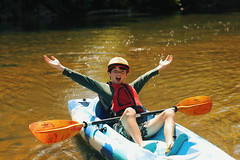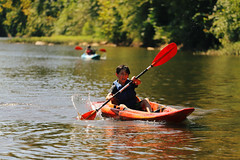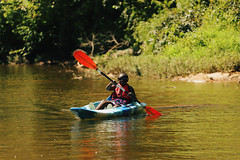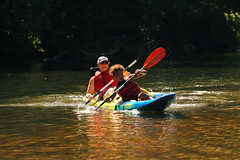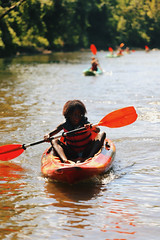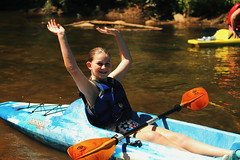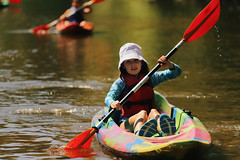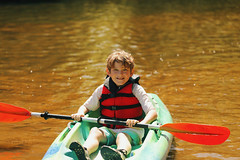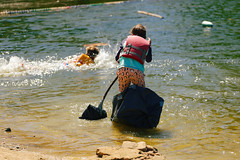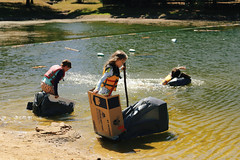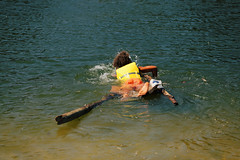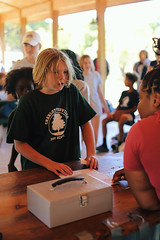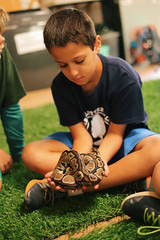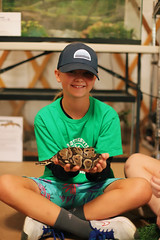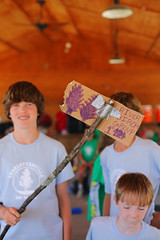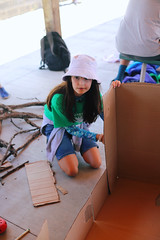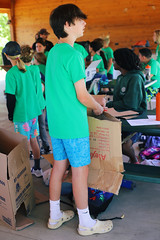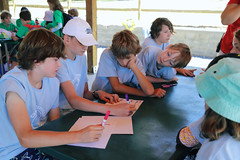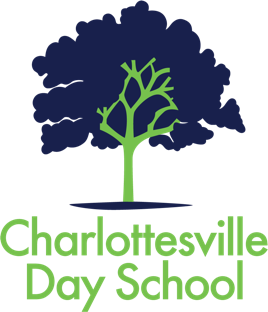Upper Elementary
The curriculum for third and fourth graders introduces them to the broader world around them through projects, experiential learning opportunities, field trips, and more as they become active citizens of a global community.
Language Arts
Third and fourth graders become part of a literary world as they examine, understand and appreciate fine writing. They become adept at highlighting and then using vocabulary that elevates both their reading and writing. They become poets, story weavers, and readers who travel far beyond their classroom through words and illustrations. At this level, students begin to transition from “learning to read” to “reading to learn.” Students daily partake in discussions that foster exquisite conversations and highlight inspirational quotes from texts. These words are used as a springboard to impart the idea that good books make you think, feel and connect. These students begin to recognize that words unite us, define us, and are the most powerful tool we are equipped with to impact our world. Children’s written work is always shared. Students evolve as authors as they respond to constructive criticism and understand that the work of a writer is always evolving. At CDS students discover that the power of their language influences actual results.
Examples of Learning
- Students participate in a whole-school interactive, Harry Potter election process. They dress as their character to deliver campaign speeches to Kindergarten through Eighth grades
- Students read Chasing Vermeer and The Mixed Files of Mrs. Basil E. Frankweiler then investigate and explore the works of famous artists. Afterwards they visit the Smithsonian’s National Gallery of Art where they interface with the masterpieces they have come to understand and appreciate.
- Students create their own 3D monster costume, accompanied by an unusual monster tale. They share and wear their creatures during our annual Harvest Festival. They later retell the monster story to a kindergarten audience.
- Students design plant brochures, highlighting factual information about specific flora native to Virginia. Third and fourth graders host middle schoolers, displaying and explaining what they have discovered.
- Students research impactful explorers and then design and biography box that includes relevant information on the outside, and related artifacts on the inside. Students manipulate the boxes in a variety of ways, including building a timeline, and sorting them into geographic groups.
Social Studies
In Third and Fourth Grade Social Studies, students work to achieve a global awareness that goes beyond labelling a map. They learn to appreciate and understand similarities and differences between cultures, and they are encouraged to find connections with citizens around the world. Third and Fourth graders become increasingly aware that as a human race we are interconnected. They develop empathy by reading and discussing the stories of everyday individuals in varied socioeconomic circumstances. History comes alive in third and fourth grade as students are not only told about but also “experience” historic events. From ancient times to currents events, students embark on a historical journey that makes history relevant and meaningful. History is experienced as more than words on a page and stories from the past. It becomes a thread that ties us all together.
Examples of Learning
- During the geography unit representatives from different countries visit CDS. The visitors prepare traditional treats from their country of origin. Students then share their research projects with the school community expertly showcasing their country of study.
- During the geography unit representatives from different countries visit CDS. The visitors prepare traditional treats from their country of origin. Students then share their research projects with the school community expertly showcasing their country of study.
- Students study artists from around the world, and link important historical events that took place during the artist’s lifetime. They construct a clothesline timeline that is revealed during a whole school museum experience.
- Students visit the Ancient Civilizations Exhibit at the VMFA in Richmond, where they are lead back in time and feast their eyes on ancient artifacts through a scavenger hunt adventure.
- Students research and read about Shakespeare’s London while simultaneously studying the development of Jamestown, Virgina. Students read, interpret and dramatize Shakespeare’s revered words while learning about the trials and tribulations of urban life in the late 1600s.
- After exploring the country of Cuba through literature, music and authentic cuisine, students uncover the country’s need for basic medical supplies. As a service project, students compile emergency kits as a sign of support.
Math
Third and fourth graders are active mathematicians in all aspects of their day, seeking out numbers and number relationships across the curriculum. For example, while students are learning about Henry Hudson’s exploration of New York, they are examining his journey including the miles he traveled, the size of his boat, the length of the river, and the time elapsed since the start of the trip. Math becomes not an isolated subject but an integrated part of their daily lives. Students are encouraged and exposed to real life mathematical situations ranging from designing a restaurant floor plan using arrays to calculating the profits of their holiday market. In this way, they not only master the skills necessary to be exemplary mathematicians but learn how to apply those skills. Third and fourth graders refine their mathematical skills through interactive games, number talks, and art based projects throughout the year. They are prepared for Middle School in that they are able to not only answer test questions accurately, but can defend their mathematical reasoning.
Examples of Learning
- Students visit a local restaurant where they are guided through a mathematical journey of fine dining. They calculate total costs of a day’s work, factor in the cost of rent, determine appropriate menu prices, examine data exploring the number of patrons per day, week, month, and year
- In the Thanksgiving project, students are given a budget and a grocery store inspired flyer in order to design their meal. They calculate the cost, balance their budget, and ensure that there will be enough food for each guest.
- Students become immersed in data as they compare the number of visitors to National Parks, determine which animal populations are most prevalent, and examine which months the parks are most frequented
- Students plan an outdoor garden using arrays and other acquired mathematical skills in combination with their study of native plants
- Students estimate the size of Lewis and Clark’s keelboat using various tools and draw a true to size model in chalk
Science
Science in third and fourth grade is an opportunity for children to see the world through a unique lens. Science is inquiry based, and often designed around students curiosity about the world. Children are encouraged to respond, investigate and carry out experiments based on events that pique their interests. Specific units of study are then supplemented with activities and opportunities that satiate a child’s natural interest. In third and fourth grade, students fine tune their understanding of the scientific method and apply this skill throughout each unit. Science overlaps with social studies and language arts as often as possible, thus creating a well rounded view of the role science plays in our daily lives.
Examples of Learning
- While studying explorers, students playfully examine the role of buoyancy by carrying out several experiments including designing vessels out of tin foil, wood and clay and creating hypotheses about which will carry the most cargo before sinking.
- During an engineering unit, students experiment with building bridges out a variety of materials, including but not limited to newspapers, paperclips and tape to understand how structures are designed, developed, improved and implemented.
- Students examine soil samples that reflect the various geographic regions that they have studied. They plant grass and hypothesize which soils will be the most fertile.
- Students design imaginative yet purposeful simple machines inspired by the artwork of Rube Goldberg.
- After reading Twenty One Balloons, students make their own hot air balloons and then use heat sources to fly their creations.
- Students experience the beauty of science by visiting the iMax theater at the Smithsonian Natural History Museum in Washington, DC.
Spanish
Foreign language learning improves listening abilities, memory function, creativity, and critical thinking skills. The CDS Spanish curriculum is actively taught and integrates speaking, reading, writing, listening and cultural activities. Elementary students learn Spanish vocabulary and communicative expressions, and third and fourth graders begin to learn basic Spanish grammar. The CDS foreign language program complements classroom instruction in math, science, social studies and language arts.
